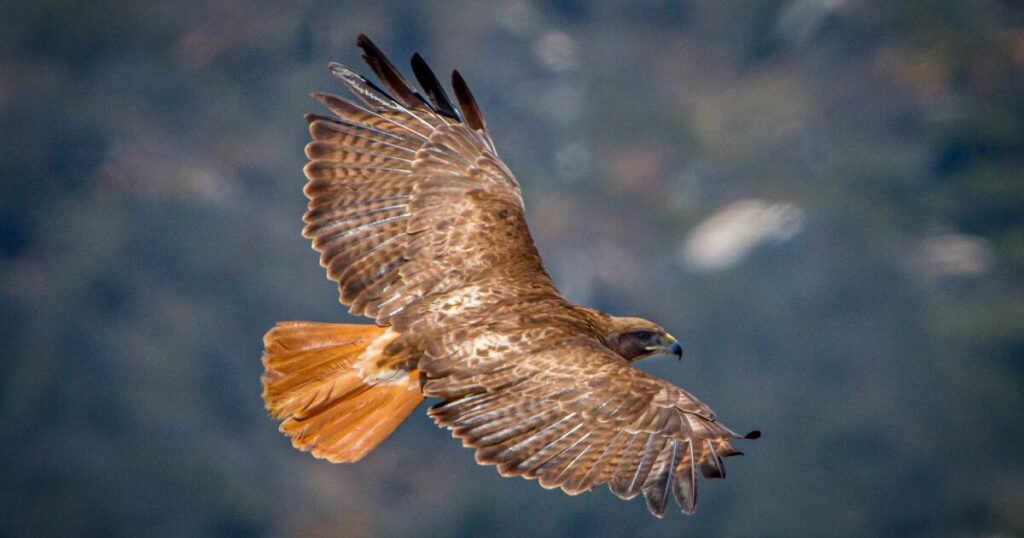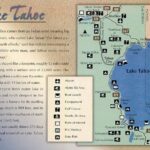The Cooper’s Hawk (Accipiter cooperii) is a medium-sized bird of prey that inhabits various regions of North America. Known for its agility, sharp vision, and stealth, this raptor has adapted to both wild and urban environments. In this detailed article, we will explore the physical characteristics, habitat, behavior, diet, and conservation status of the Cooper’s Hawk, as well as its cultural significance and interactions with humans.
Physical Characteristics
Size and Shape
The Cooper’s Hawk is a robust raptor with a body length ranging from 14 to 20 inches (36 to 51 cm) and a wingspan of approximately 24 to 35 inches (62 to 90 cm). Males are generally smaller than females, a common trait among raptors known as reverse sexual dimorphism. Adult males typically weigh between 7.8 to 14.5 ounces (220 to 410 grams), while females are heavier, weighing 12 to 24 ounces (340 to 680 grams).
Plumage
The plumage of the Cooper’s Hawk is a striking combination of blue-gray on the back and upper wings, with a white or light gray underbelly adorned with fine, horizontal reddish bars. Juvenile birds have brown upperparts and streaked underparts, which help them blend into their surroundings while they develop their adult plumage.
Eyes and Beak
One of the most notable features of the Cooper’s Hawk is its sharp, yellow eyes, which turn deep red as they mature. These eyes are perfectly adapted for spotting prey from a distance. The beak is hooked and sharp, designed for tearing flesh, while the legs are long and equipped with strong talons for grasping and killing prey.
Habitat and Distribution
Natural Habitat
The Cooper’s Hawk thrives in a variety of habitats, including deciduous and mixed forests, woodlands, and riparian zones. They prefer areas with dense canopy cover, which provides ample opportunities for ambush hunting. These hawks are also found in suburban and urban areas, where they have adapted to hunting in parks, gardens, and backyards.
Geographic Range
The Cooper’s Hawk’s range extends from southern Canada through the United States and into Mexico and Central America. They are permanent residents in many parts of their range, although northern populations may migrate southward during the winter months to avoid harsh weather conditions.
Behavior and Ecology
Hunting Techniques
Cooper’s Hawks are known for their incredible agility and speed, which they use to their advantage when hunting. They primarily feed on smaller birds, but their diet can also include small mammals, reptiles, and insects. These raptors employ a method of hunting known as “still-hunting,” where they perch silently and watch for potential prey before launching a surprise attack. Their long legs and sharp talons allow them to catch and kill their prey swiftly.
Breeding and Nesting
The breeding season for Cooper’s Hawks typically begins in early spring. Courtship involves aerial displays and vocalizations by both males and females. Once a pair forms a bond, they work together to build a nest, usually in the fork of a tree or dense foliage. The nest is constructed from sticks and lined with softer materials like bark and leaves.
A typical clutch consists of 3 to 5 eggs, which are incubated by the female for about 30 to 36 days. The male provides food during this period. Once the eggs hatch, both parents share the responsibility of feeding the chicks. The young hawks fledge after about 4 to 5 weeks but remain dependent on their parents for several more weeks as they learn to hunt.
Communication
Cooper’s Hawks communicate through a variety of vocalizations, especially during the breeding season. Their calls include a sharp “cak-cak-cak” sound, used to defend their territory and signal alarm. They also use body language, such as fluffing their feathers or spreading their wings, to communicate with each other.
Diet and Feeding Habits
Primary Diet
The diet of a Cooper’s Hawk primarily consists of small to medium-sized birds, such as sparrows, starlings, and doves. They are skilled hunters and can maneuver through dense vegetation to catch their prey. Their diet can also include small mammals like chipmunks, squirrels, and rabbits, as well as reptiles and large insects.
Hunting Adaptations
Several physical and behavioral adaptations make the Cooper’s Hawk an efficient hunter. Their short, rounded wings and long tail enable them to navigate through thick forests with ease. Their keen eyesight allows them to spot prey from a distance, and their powerful talons and beak are designed to catch and kill quickly. Additionally, their stealthy approach and rapid attack minimize the chances of their prey escaping.
Conservation Status
Current Status
The Cooper’s Hawk is currently listed as a species of “Least Concern” by the International Union for Conservation of Nature (IUCN). This classification indicates that the species is widespread and abundant, with stable population trends. However, like all raptors, they face threats that could impact their populations if not addressed.
Threats
One of the main threats to Cooper’s Hawks is habitat destruction due to urban development and deforestation. Pesticides and pollutants can also negatively affect their health and reproductive success. Collisions with windows, vehicles, and power lines pose significant risks, especially in urban areas. Additionally, human persecution, although less common today, can still be a threat in some regions.
Conservation Efforts
Various conservation efforts have been implemented to protect Cooper’s Hawks and their habitats. These include legal protections, habitat restoration projects, and public education campaigns. Organizations like the Raptor Research Foundation and local wildlife agencies work to monitor populations and advocate for policies that benefit raptors. In urban areas, efforts to make buildings more bird-friendly, such as using bird-safe glass, can help reduce collision-related fatalities.
Cultural Significance
In Native American Culture
The Cooper’s Hawk holds significance in various Native American cultures. Some tribes consider the hawk a symbol of vision, power, and tenacity. It is often revered as a messenger between humans and the spirit world. In certain traditions, feathers from Cooper’s Hawks are used in ceremonial attire and rituals to invoke these qualities.
In Modern Culture
In modern times, the Cooper’s Hawk has gained attention from birdwatchers and nature enthusiasts. Its presence in urban areas provides people with an opportunity to observe a wild predator up close, fostering an appreciation for wildlife and the importance of conservation. The hawk’s adaptability and hunting prowess also make it a subject of interest in wildlife documentaries and educational programs.
Interactions with Humans
Urban Adaptation
The Cooper’s Hawk has shown remarkable adaptability to urban environments. Parks, gardens, and green spaces in cities offer ample hunting grounds and nesting sites. While this adaptation benefits the hawk, it can sometimes lead to conflicts with humans, especially when these birds prey on backyard birds or cause alarm with their hunting behaviors.
Mitigating Conflicts
To mitigate conflicts, homeowners and bird enthusiasts can take several steps. Providing bird feeders in open areas away from dense vegetation can reduce the chances of hawks ambushing feeder birds. Educating the public about the ecological role of Cooper’s Hawks and the importance of raptors in controlling pest populations can also foster coexistence.
Bird Watching and Citizen Science
Birdwatching has become a popular hobby, and Cooper’s Hawks are often a highlight for birders due to their striking appearance and behaviors. Citizen science projects, such as the Cornell Lab of Ornithology’s Project FeederWatch, encourage people to report sightings and behaviors of birds, including Cooper’s Hawks. This data helps scientists track population trends and understand the impacts of urbanization on wildlife.
Conclusion
The Cooper’s Hawk is a fascinating and adaptable bird of prey, embodying the grace and ferocity of raptors. From its physical prowess and hunting techniques to its ability to thrive in both wild and urban environments, the Cooper’s Hawk is a testament to the resilience and adaptability of wildlife. Understanding and appreciating these birds not only enriches our knowledge of the natural world but also highlights the importance of conservation efforts to ensure their continued survival.
In the complex dance of predator and prey, the Cooper’s Hawk stands as a symbol of nature’s balance, a reminder of the intricate web of life that sustains our planet. By protecting these magnificent birds and their habitats, we contribute to the health and diversity of our ecosystems, ensuring that future generations can also marvel at the sight of a Cooper’s Hawk in flight.







